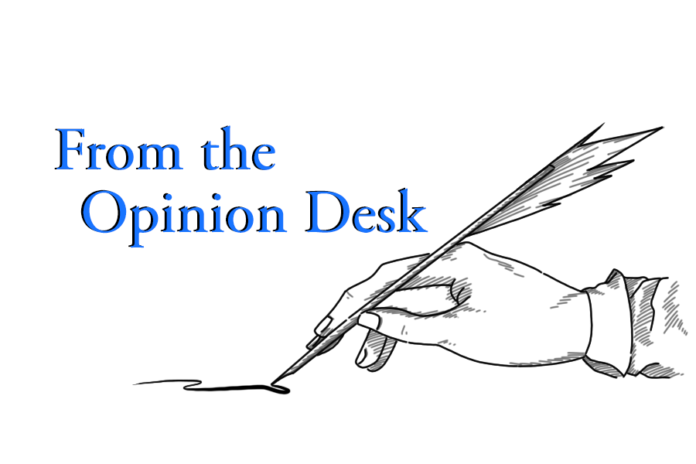An analysis of how to craft the perfect antagonist
By ALEX MOTAWI — almotawi@ucdavis.edu
It’s hard to create a complete story without a villain. Whether it’s just one really bad person, an omnipotent being obsessed with ending the world or even the mind of the protagonist themselves, villains are the genesis of many stories. While reviews I’ve read can sometimes gloss over villains and focus on the protagonist, a great villain will turn any average story into a legendary one and should never be overlooked.
First, let’s break down general villainy into two categories I call the everyman villain and the supernatural villain. As completely different ideas, they deserve to be looked at separately — is it really fair to compare the typical James Bond villain, a normal person with extreme aspirations, to the all-encompassing evil-spreading vermin-spawning eye that is Sauron from Lord of the Rings?
So what makes an everyman villain worth remembering? Well, one part of it is their motivation. A well-crafted everyman can get away with their main motivation being to just spread evil, but most strong villains have a reason behind their actions and a specific goal they are willing to do anything to accomplish. A second thing that can turn an average everyman into someone that can elicit a visceral reaction from onlookers is a token personality trait or distinguishing feature of the villain. Something weird that they do that just makes people cringe and makes the villain memorable. The last thing I look for when analyzing an everyman villain is nuance. Is there a reason we don’t know about that explains some of their actions? Are they all bad, or do they have a bright spot deep down inside them? They’re often not all bad since the villain thinks they are doing the right thing.
To be a legendary villain, a villain of the everyman archetype needs nuance. They need to have realistic motivations that explain their devious goals, and they need to exist beyond their evil plan. No human being has a one-track mind and tunnel-visions on anything so deeply that they forget the rest of the world, so why would a villain? The last sign of a quality everyman villain is if they draw parallels to people or situations from the real world, as it makes them more relatable.
Here are a few everyman villains I remember and why they stand out. I was never a Harry Potter fan, but Voldemort comes to mind. He has a specific goal (purify the bloodline), a distinguishing feature (his nose) and is a fictional representation of Adolf Hitler. A second example would be Baron Vladimir Harkonnen from Dune. His main motivator is greed, which is a very human emotion, he carves a memorable figure and has very evil mannerisms. I feel he is missing depth as a person, but he just emanates evil so powerfully that you have to get invested in his defeat.
The second type of villain would be the omnipotent evil. This isn’t usually a human and comes more in the form of a god or extraterrestrial creature. They play with the world like chess pieces, and it’s important that they drive fear into the minds of others. To work well, they must feel invincible and unstoppable. In this archetype, nuance isn’t nearly as important; a showcase of power over the heroes is integral.
Really, Sauron from Lord of the Rings is the quintessential omnipotent villain. They are mysterious, inhuman and all-powerful. They just feel unstoppable and amass massive armies like it’s nothing. A second example would be Ruin from the Mistborn book series. A literal god, he is feared because he changes the very rules of society and can control people by speaking right into their minds. It feels like he is everywhere and unavoidable, which does wonders to inspire fear and hate.
Lastly, I want to mention who I think is the best villain in media — Darth Vader. Vader defies the molds and manages to be a manifestation of both types of villains. He is the mouthpiece of Palpatine (who is also a great villain) in that his motivation is to restore order to the galaxy, which is not necessarily a bad thing. We all know what makes him memorable (the suit and voice), and he has a bright spot deep inside. He works as an omnipotent being as well as the force makes him effectively unkillable, and his stature and reputation strike fear into the minds of everyone. He fits both styles, and above all, is full of nuance. He’s a (theoretically) unstoppable villain that everyone remembers, and that is only enhanced by the fact that he exhibits humanity. Darth Vader defines Star Wars; it’s hard to say that about most other villains (his only equal here is Megamind in the film “Megamind”, but Megamind isn’t really a villain).
Overall, crafting the perfect villain is not a science — it’s an art. It’s not as simple as it seems. It’s not easy by any stretch of the imagination, and it speaks volumes that the current best villain of all time was envisioned in the 1970s (It’s Darth Vader, and in most publications, The Joker comes second). Nothing can complete a story like the perfect villain, and I can’t wait to see what comes next in the world of villainy.
Written by: Alex Motawi — almotawi@ucdavis.edu
Disclaimer: The views and opinions expressed by individual columnists belong to the columnists alone and do not necessarily indicate the views and opinions held by The California Aggie.




